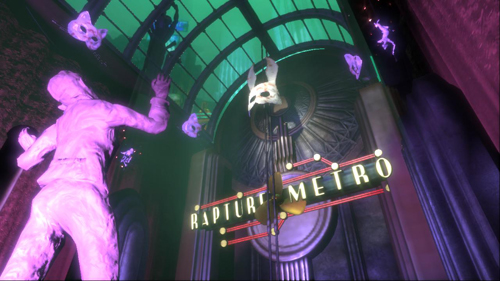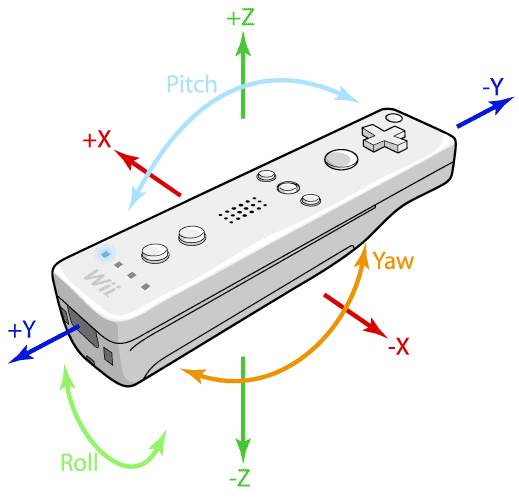This post has not been edited by the GamesBeat staff. Opinions by GamesBeat community writers do not necessarily reflect those of the staff.
That’s right, I said it…Roger Ebert is a work of art.

I mean, think about it, he has appendages that decide the fate of movies that took years of manpower and millions of dollars to put together. If you can’t please this man’s thumbs, you don’t deserve to be on the big screen…and I’m okay with this, when he sticks to what he knows, reviewing movies.
However, when he branches into other mediums that, at age 67, may never have been intended for his demographic, like video games, I feel like anything he says ought to be taken with a considerably large grain of salt. Mind you, that is not to say that a 67 year old cannot enjoy or engage in a video game, just that the odds are far less likely than those of someone 30 years younger doing the same.
In my recent Internet browsing I came across a journal post from April of last year, that made me just as angry now as it did when I first read it. Revising an argument made before, Ebert shared his thoughts on the possibility of video games qualifying as an artistic medium.
“Let me just say,” Ebert shared, “that no video gamer now living will survive long enough to experience the medium as an art form.”
Clearly, I am biased here. Obviously I consider video games an art form, or, at the least, a currently developing one. In saying that, I would challenge Ebert’s opinion using the very source material he cited in his rant, a TED X presentation made by former USC student and President of ThatGame Company, Kellee Santiago (video can be found here).
Saying that, “games already ARE art,” she compares the current state of video games within the historical spectrum of art as a medium. Current games are the near equivalent of the “chicken-scratch” that is cave paintings from the Neanderthals. While saying that Ebert is foolish to believe video games lack the potential to evolve as a medium, she does agree with him, saying, “No one in or out of the
field has ever been able to cite a game worthy of comparison with the great poets, filmmakers, [and] novelists.”

These cave drawings are clearly art–and for all Ebert knows, they are screen shots from Cabella’s Big Game Hunter.
Personally, I would counter that point. That argument is terribly subjective and is determined solely by the gamer themselves.
Being an avid fan of Shakespeare I know I have, on rare occasion, found diluted Shakespearean elements within a video game to some degree. Was this the intention of the designers? Is it merely a happy accident or coincidence because of my knowledge base? Obviously that is a whole other argument, but while it may not put games on an equal pedestal with Vivaldi, Shakespeare and Chaucer, it certainly allows them access to the tools to begin molding a pedestal of their own.
Using the Wikipedia definition of art and combining it with Robert McKee’s definition of what constitutes “good writing,” Santiago develops her own definition, which I find particularly poignant in this case.
Her definition states, “Art is a way of communicating ideas to an audience in a way that the audience finds engaging.” I find that this definition, despite using Wikipedia as half of its source (something I would never recommend doing), easily applies to nearly every medium of art.
The goal of any artist is, at the very least, to engage the person who will eventually be viewing their piece in some way. I find the same applies to video games in nearly every genre. While Santiago uses purposefully artistic games like the Xbox 360 Arcade phenomenon “Braid” and the PS3 game “Flower”, I would go so far as to say even games like the original BioShock and Super Mario Sunshine back on the GameCube fulfilled the same purpose.

See, Roger? I don’t know about you, but where I come from, paintbrush = art.
Hell, BioShock, while being something Ebert would essentially call a “brainless shooting-gallery,” not only fulfilled its purpose as a First-Person Shooter but completely redefined the genre at the same time.
While eliciting the emotions that come along with a tour through the underwater hell that is Rapture, the game also forces gamers to question nearly everything they have ever thought about the FPS genre. Typically we surrender our free will to orders made by the NPCs, and no game directly questioned our willingness to obey quite like 2K Boston’s blockbuster hit.
That’s not even accounting for how aesthetically gorgeous the graphics were.
Some of the best movies, the best books, the best paintings and drawings, and the most interesting architectural designs came from a desire to force us to question comfort and conformity. Whether it be out of the dangers of becoming too comfortable, or just the need to shake the status-quo, art, as a medium has always been the most convenient vehicle for change. So then, I ask, how could a game like BioShock NOT be considered, in some degree, art?

The attention to detail in the architecture of Rapture alone is jaw-dropping.
Well, according to Ebert, the line is drawn between art and games because, “One obvious difference…is that you can win a game. It has rules, points, objectives, and an outcome. [One] might cite [an] immersive game without points or rules, but I would say then it ceases to be a game and becomes a representation of a story, a novel, a play, dance, a film. Those are things you cannot win; you can only experience them.”
According to the Merriam-Webster Dictionary the primary definition of a game (from a list of four various definitions) is an, “activity engaged in for diversion or amusement.” At least one of the other definitions does recognize that some games have an inherent scoring mechanism. But, the primary definition, the one that your average reader will look at, and typically not beyond, not only defines games, but in my opinion could equally apply to art.
Looking at “Braid,” Santiago notes the aesthetic artistic elements as well as those in the games plot and mechanics. The ability to rewind time and correct our mistakes, thus preventing the player from “dying,” combined with a emotionally reflective storyline throughout, she argues, makes us reflect upon ourselves a large part of the experience, as one would with art. Ebert counters by saying, “In chess, this is known as taking back a move, and negates the whole discipline of the game. Nor am I persuaded that I can learn about my own past by taking back my mistakes in a video game. She also admires a story told between the games levels, which exhibits prose on the level of a wordy fortune cookie.”
Here, Ebert’s lack of experience in the field truly hinders his point. Santiago notes early on that there is a distinct difference between games like chess, football, and baseball and video games. Therefore, when he compares the rewind feature in “Braid” to reneging on a move in chess he is essentially comparing apples to oranges.
Standing behind his misconception, it is no surprise that the game’s rewind mechanic would not create feeling of self-reflection, and no amount of writing would compel him to think about his own choices, mostly because he has decided “Braid” is no more than a bad game of chess, which clearly, it is not.
Ebert’s final argument is that Santiago’s effort to define her vision of art in the 21st century, disproves her entire point. As he puts it, “she shows a visual with six circles, which represent, I gather, the components now forming for her brave new world of video games as art. The circles are labeled: Development, Finance, Publishing, Marketing, Education, and Executive Management. I rest my case.”
Rest your case, do you, Mr. Ebert? What exactly are you trying to say? Are you saying that the film industry, which you call art, does not thrive off of those very six same components? Are you telling us that Michelangelo, in painting the Sistine Chapel did not, in some cruder fashion, have to figure out the development, the financing, and the management of the project before beginning to paint? That Beethoven didn’t have to meld his publishing knowledge, his education and certain marketing savvy into his plans to write new operas? I’m sorry, but that is just clearly incorrect and insultingly pretentious of you.
In the end, Ebert feels that a gamer’s incessant search for “validation” of some sort shows that we too are unsure that video games should be considered art. “Bobby Fischer, Michael Jordan and Dick Butkus never said they thought their games were an art form,” he says, “Why aren’t gamers content to play their games and simply enjoy themselves? They have my blessing, not that they care.”
Granted blessing aside, I don’t believe it is validation we are looking for Mr. Ebert. What it is we are looking for, is the acceptance within the artistic community we so readily deserve. That being said, you cannot rightfully write us off when we come to you, one of America’s foremost artistic critics and ask that you acknowledge what we, as a vastly large community, already know. Just because you are not as well versed in our particular field, does not mean we are wrong, sir.
If anything it means that you’re afraid of what you don’t understand, and the easiest way to solve this is to pick up a controller and learn—it isn’t hard, and you’ll find we’re a very forgiving group. So give it a shot Roger, surprise us all and try and evolve your opinion like we all know you’re capable of—you ridiculous work of art, you.

Video games, where the past, present and future of art become one.
Justin Brenis is co-founder and editor at Pixel Perfect Magazine in Cleveland, OH. Check them out at www.pixelperfectmag.com. You can also follow them on Twitter @ThePixelPerfect.
